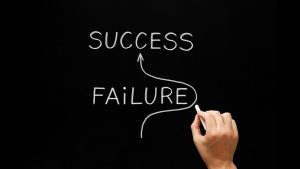Introduction
Failure is a part of life. Everyone experiences setbacks and makes mistakes. Learning how to Deal with failure and turn it into a lesson is very important. When you understand that mistakes are opportunities to learn, you become stronger and more resilient. This article will help you discover simple ways to Deal with failure, learn from your experiences, and grow with a growth mindset. It is written in clear, easy-to-read language so that even kids can understand. Let’s explore the steps to overcome obstacles and use them as stepping stones toward success.
What Is This and That: Understanding Failure and Its Lessons

Failure happens when things do not go as planned. It might mean not getting a good grade on a test or not winning a game. However, failure is not the end of the world. It is a chance to learn, improve, and try again. When you learn from failure, you develop self-improvement and a growth mindset. This means you begin to see mistakes as learning opportunities rather than as problems. It is like planting a seed that grows into a strong tree. Every mistake gives you a chance to learn something new and to become better at what you do.
Understanding that Failure is a Normal part of life helps you stay positive. It is important to remember that everyone fails sometimes, even the best people in the world. By accepting failure and learning from it, you build the courage to try new things and improve yourself. This process of learning is what helps you grow and become more successful over time.
The Benefits of Embracing Failure

Embracing failure can be very beneficial. When you face your mistakes, you can see what you did wrong and learn how to do it better next time. This helps build your confidence and resilience. For example, if you fail a test, you have the chance to study harder and understand the subject more deeply. In doing so, you become smarter and more prepared for future challenges.
Learning from failure also helps you develop a growth mindset. This is the idea that you can improve and develop your skills with effort and practice. When you believe that you can learn from your mistakes, you become more willing to take risks and try new things. Over time, this can lead to success in school, sports, and other areas of life. A positive attitude toward failure encourages creativity and perseverance, which are key ingredients in achieving your dreams.
How to Deal with Failure and Turn It Into Success

One of the best ways to deal with failure is to change your perspective. Instead of thinking of failure as something negative, see it as a learning experience. Take time to reflect on what went wrong and why. Write down your thoughts in a journal or talk to someone who can help you understand your mistakes. This process of reflection is essential for self-improvement.
Another important step is to set small, achievable goals. When you have clear goals, you can work toward them step by step. If you fail, adjust your plan and try again. This persistence is a key part of overcoming failure. Remember, every time you try and learn from your mistakes, you are growing stronger and more capable. Celebrate your progress, no matter how small, and use each experience as a stepping stone to future success.
Table: Key Steps to Learn from Failure
Below is a table summarizing important steps to deal with failure and turn it into an opportunity for growth:
| Step | Action | Benefit |
|---|---|---|
| Reflect on Mistakes | Write down what went wrong and why | Understand your mistakes and learn from them |
| Set Small Goals | Break big tasks into smaller, achievable steps | Build confidence and make progress step by step |
| Seek Feedback | Ask teachers, friends, or mentors for advice | Gain new perspectives and improve your skills |
| Adjust Your Plan | Modify your approach based on what you learned | Increase your chances of success next time |
| Celebrate Progress | Recognize and reward small victories | Boost motivation and build a positive mindset |
This table provides a clear guide to transforming failure into a positive learning experience. Each step helps you build resilience and develop a growth mindset that will serve you well in life.
Tips for Staying Positive After Failure

Staying positive after a setback is crucial. One tip is to practice gratitude. Even when things go wrong, think about the good things in your life. Keeping a gratitude journal can help you remember what you appreciate every day. This practice can shift your focus from what went wrong to what is going well.
Another tip is to surround yourself with supportive people. Talk to friends, family, or teachers who encourage you and help you see the bright side of things. Their advice and kindness can give you the strength to overcome challenges. Also, take care of your body by getting enough sleep, eating healthy foods, and exercising regularly. A healthy body supports a healthy mind, which makes it easier to bounce back from failure.
Remember that everyone faces setbacks. Even famous athletes, artists, and leaders have experienced failure. Their stories show that overcoming challenges is part of the journey to success. Use these examples as motivation and keep moving forward.
How to Learn from Failure and Improve
Learning from Failure involves turning every mistake into a lesson. Reflect on what went wrong and think about how you can do better next time. Ask yourself questions like, “What can I change?” and “What did I learn?” This process of self-reflection is vital for self-improvement. It helps you understand your weaknesses and work on them.
You can also seek feedback from others. Constructive criticism is a valuable tool for growth. It can highlight areas where you might need extra help or new ideas. Use this feedback to adjust your strategies and try again. Every failure is a chance to learn something new and improve your skills.
The Role of a Growth Mindset in Handling Failure

A growth mindset is the belief that you can get better with practice and effort. This mindset is crucial when dealing with failure. Instead of feeling discouraged, a growth mindset encourages you to see challenges as opportunities to learn. It helps you understand that mistakes are part of the journey to success.
By adopting a growth mindset, you become more resilient. You learn that failure is not a permanent state but a temporary setback. With each mistake, you get closer to your goals. This attitude is essential for both school and work, as it builds confidence and determination. Embrace challenges and view them as stepping stones rather than obstacles.
How to Create a Plan for Overcoming Failure
Having a plan can make a big difference in how you deal with failure. Start by setting clear, small goals that you can work on each day. Write them down and track your progress. If something doesn’t work out, don’t worry—adjust your plan and try again.
Plan for regular reviews. At the end of each day or week, look back at your progress. Ask yourself what worked well and what you can improve. This habit of reflection will help you learn continuously and make smarter decisions. A well-thought-out plan not only helps you overcome failure but also builds a strong foundation for future success.
Creative Ways to Stay Motivated When Facing Failure

Keeping your spirits up when facing failure is important. One creative way is to turn your setbacks into a game. Set small challenges for yourself and reward your achievements. For example, if you complete a difficult task, treat yourself to something you enjoy, like extra playtime or a favorite snack.
Another idea is to share your journey with friends or family. Talk about what you learned from each mistake and celebrate your progress together. You can even create a “failure wall” where you write down lessons learned from mistakes. This turns failures into positive memories that remind you how far you’ve come.
These creative strategies not only make self-improvement fun but also help you see that every challenge is an opportunity to learn and grow.
How to Build Resilience Through Failure
Resilience is the ability to bounce back from setbacks. Building resilience is key to handling failure. To build resilience, practice staying calm when things go wrong. Take deep breaths, step back, and think about a solution. Remember, every failure is a chance to learn and improve.
Resilience also comes from experience. The more you face challenges, the stronger you become. Try to take on small challenges regularly. Each time you overcome a difficulty, you add to your strength. Over time, you will become more confident and capable of handling larger setbacks. A resilient mindset helps you turn failure into a powerful tool for growth and success.
How to Use Technology to Learn from Failure
Technology can help you track your progress and learn from failure. Many apps and online tools let you keep a digital journal or record your progress. This makes it easy to review your past experiences and see where you improved. Some apps even offer reminders and tips to help you stay focused on your goals.
Using technology, you can also connect with others who are on a similar journey. Online communities and forums provide support and advice from people who have faced similar challenges. Sharing your experiences and learning from others can be a great motivator. These digital tools make it easier to manage self-improvement and maintain a growth mindset even when facing setbacks.
Frequently Asked Questions (FAQs)
FAQ 1: What does it mean to deal with failure?
Handling failure means accepting mistakes, learning from them, and using those lessons to improve your future efforts.
FAQ 2: How can I develop a growth mindset?
Develop a growth mindset by believing that you can improve through effort, learning from mistakes, and viewing challenges as opportunities to grow.
FAQ 3: What are some practical ways to learn from failure?
Practical ways include reflecting on your mistakes, seeking feedback, setting small goals, and adjusting your plans based on what you learn.
FAQ 4: How can kids benefit from learning about failure?
Kids benefit by learning that mistakes are normal and that they can learn from them. This builds resilience and confidence to try new things.
FAQ 5: What are some creative ideas to stay motivated after a setback?
Try turning setbacks into a game, creating a “failure wall,” celebrating small wins, and sharing your journey with supportive friends or family.
Call-to-Action
Ready to transform your setbacks into stepping stones for success? Visit our website today for more expert self-improvement tips, inspirational success stories, and practical guides on handling failure and developing a strong growth mindset. Join our community and start your journey toward success now!
Final Thoughts and Conclusion
This article explained how to deal with failure and learn from it by developing a growth mindset, setting small goals, seeking feedback, and using creative strategies. Embrace challenges, reflect on your mistakes, and build resilience through practice. These steps help you turn setbacks into valuable lessons that pave the way to success.
Begin your journey today by exploring our resources and joining our supportive community. Visit our website for more expert advice and start building a better future with every lesson learned.











